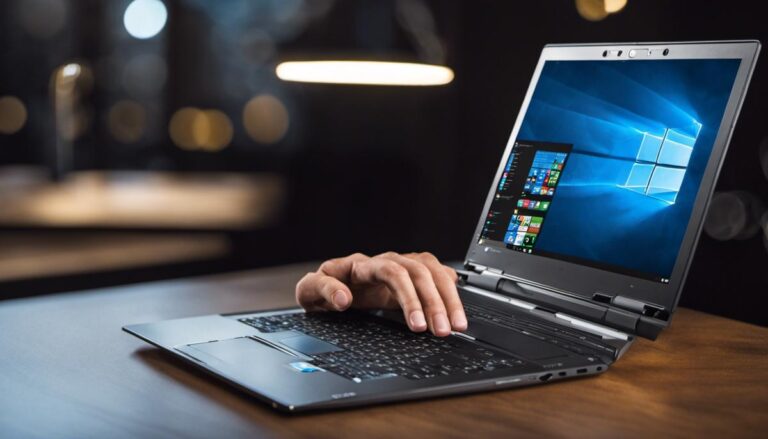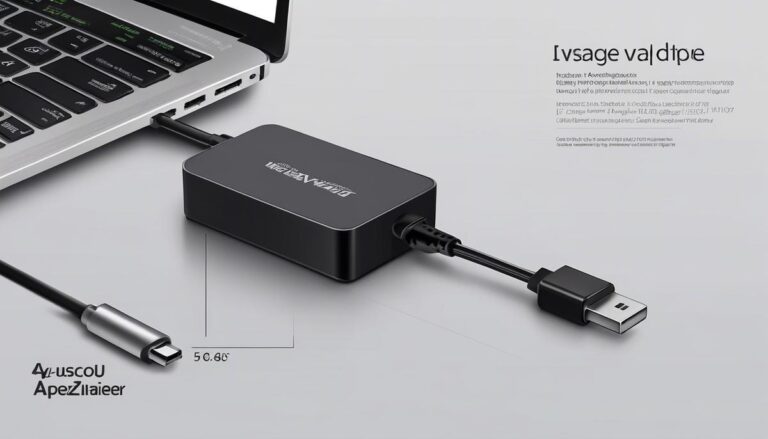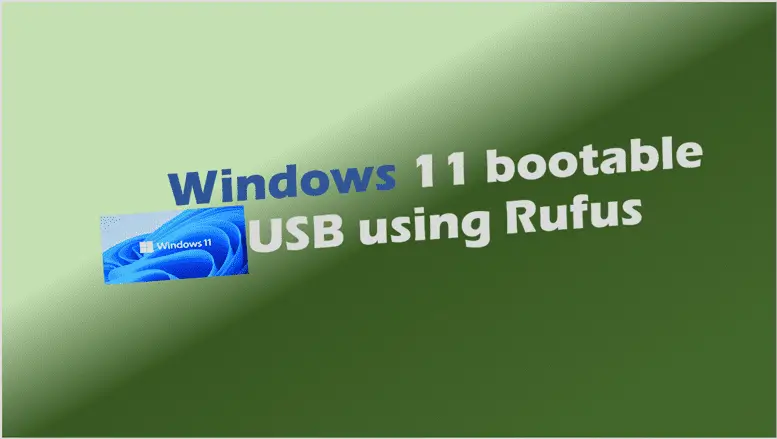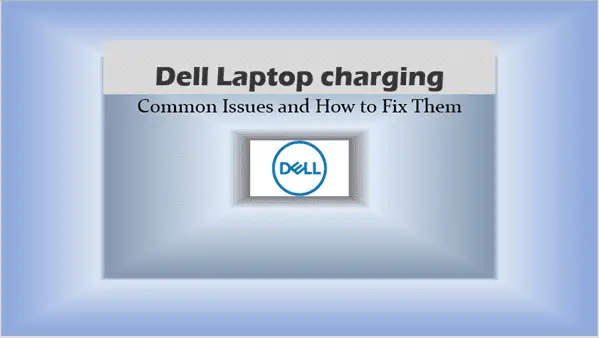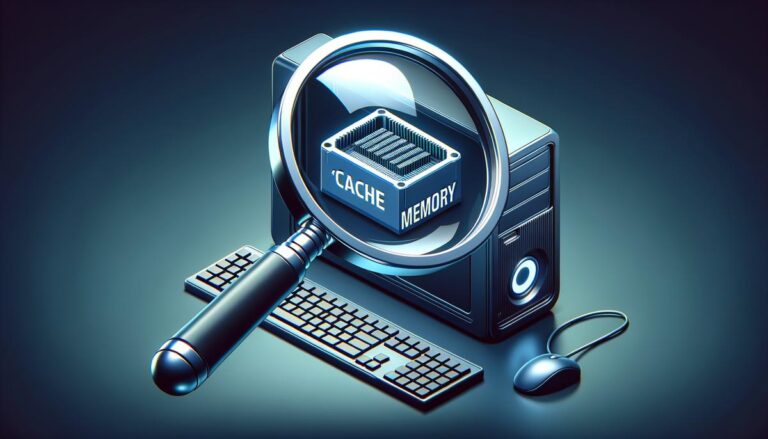How to Clear Cache on Laptop: The Ultimate Guide for Smooth Performance
Discover how to clear cache on laptop and boost performance. Our step-by-step guide covers all major brands and operating systems. Speed up your device today!
Are you experiencing sluggish performance on your laptop? Does your device seem to be running out of storage space faster than you’d expect? The culprit might be hiding in plain sight – your laptop’s cache. As an IT Support technician with over a decade of experience in laptop maintenance, I’ve seen firsthand how a bloated cache can impact your computer’s performance. But don’t worry, I’m here to guide you through the process of clearing your laptop’s cache, step by step.
In this comprehensive guide, we’ll explore everything you need to know about clearing cache on various laptop models and operating systems. Whether you’re using a Dell, HP, or any other brand, running Windows 10, Windows 11, or even the older Windows 7, we’ve got you covered. Let’s dive in and give your laptop the performance boost it deserves!
What is Cache and Why Should You Clear It?
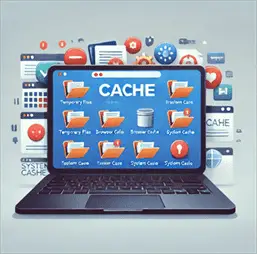
Before we jump into the how-to, let’s quickly understand what cache is and why it’s important to clear it regularly.
Cache is a temporary storage space on your laptop that stores frequently accessed data for quicker retrieval.
While cache can improve your laptop’s speed in the short term, over time, it can accumulate unnecessary data, taking up valuable space and potentially slowing down your system. Clearing your cache periodically can help:
- Free up storage space
- Improve overall system performance
- Resolve certain browsing issues
- Protect your privacy by removing stored data
Now that we understand the importance of clearing cache, let’s look at how to do it on different laptop brands and operating systems.
How to Clear Cache on Windows 10 and Windows 11 Laptops
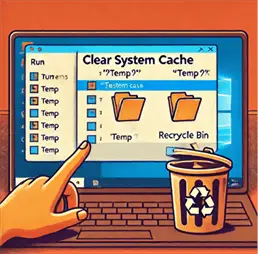
Windows 10 and Windows 11 are the most popular operating systems for laptops today. Here’s how you can clear cache on these systems:
Clearing System Cache
- Press the Windows key + R to open the Run dialog box.
- Type
%temp%and press Enter. - This will open the Temp folder. Select all files (Ctrl + A) and delete them.
- Empty the Recycle Bin afterward.
Clearing Browser Cache
For the most common browsers:
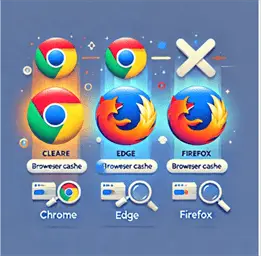
Google Chrome
- Open Chrome and click the three dots in the top-right corner.
- Go to More tools > Clear browsing data.
- Choose the time range and select “Cached images and files”.
- Click “Clear data”.
Microsoft Edge
- Click the three dots in the top-right corner.
- Go to Settings > Privacy, search, and services.
- Under “Clear browsing data”, click “Choose what to clear”.
- Select “Cached images and files” and click “Clear now”.
Mozilla Firefox
- Click the menu button and select Options.
- Go to Privacy & Security.
- In the Cookies and Site Data section, click “Clear Data”.
- Select “Cached Web Content” and click “Clear”.
Using Disk Cleanup
Windows has a built-in tool called Disk Cleanup that can help clear various types of cache:
- Type “Disk Cleanup” in the Start menu search bar.
- Select the drive you want to clean (usually C:).
- Check the boxes for the types of files you want to delete, including “Temporary files”.
- Click “OK” to start the cleanup process.
How to Clear Cache on HP Laptop
HP laptops typically run on Windows, so you can follow the Windows instructions above. However, HP also provides its own tools for maintenance:
- Open HP Support Assistant (if installed).
- Go to the Maintain tab.
- Click on “Cleanup disk space”.
- Follow the prompts to clear unnecessary files and cache.
How to Clear Cache on Dell Laptop
Like HP, Dell laptops usually run Windows. In addition to the Windows methods, Dell offers SupportAssist:
- Open Dell SupportAssist.
- Go to the “Clean Files” section.
- Click on “Run” to start the cleanup process.
How to Clear Cache on Laptop: Windows 7 Edition
For those still using Windows 7:
- Click the Start button and type “Disk Cleanup” in the search box.
- Select the drive you want to clean.
- Under “Files to delete”, select “Temporary files”.
- Click “OK” to start the cleanup.
Clearing Cache Using Shortcut Keys
For quick cache clearing, you can use these shortcut keys:
- Windows + R, then type
%temp%and press Enter - Ctrl + Shift + Delete (in most browsers) to quickly access the clear browsing data options
How Often Should You Clear Cache?
The frequency of clearing cache depends on your usage, but here are some general guidelines:
- Light users: Once a month
- Moderate users: Every two weeks
- Heavy users: Once a week
Remember, clearing cache too frequently can temporarily slow down your browsing as the cache needs to be rebuilt.
Tips for Maintaining a Clean Cache
- Use browser extensions: Some extensions can automatically clear cache when you close the browser.
- Schedule regular cleanups: Use Windows Task Scheduler to automate the process.
- Be selective: Not all cache is bad. Only clear what’s necessary.
- Update your software: Keeping your system and applications updated can help manage cache more efficiently.
Key Takeaways
- Clearing cache can improve your laptop’s performance and free up storage space.
- Different laptop brands and operating systems have varying methods to clear cache.
- Browser cache should be cleared separately from system cache.
- Use built-in tools like Disk Cleanup or brand-specific software for comprehensive cleaning.
- Regular cache clearing (based on your usage) can help maintain optimal laptop performance.
FAQ
- Q: Will clearing cache delete my personal files? A: No, clearing cache only removes temporary files and won’t affect your personal documents or settings.
- Q: Do I need to clear cache on my SSD laptop? A: Yes, even SSDs benefit from cache clearing, although they’re less affected by fragmentation than HDDs.
- Q: Can clearing cache fix website loading issues? A: Yes, it often can. Clearing browser cache can resolve many website loading and display problems.
- Q: Is it safe to delete everything in the Temp folder? A: Generally, yes. Windows won’t let you delete files that are currently in use.
- Q: How do I clear cache on my laptop without deleting passwords? A: When clearing browser data, make sure to uncheck the option for passwords or saved login info.
- Q: Can clearing cache improve gaming performance on my laptop? A: It can, especially for games that store lots of temporary files. Clear both system and game-specific caches.
- Q: What’s the difference between clearing cache and cookies? A: Cache stores temporary files to load sites faster, while cookies store user preferences and login info.
- Q: How do I clear cache on a Lenovo laptop? A: Lenovo laptops typically run Windows, so you can follow the Windows instructions provided earlier.
- Q: Can too much cache cause a laptop to overheat? A: Indirectly, yes. Excess cache can lead to higher disk activity, potentially causing more heat generation.
- Q: Is there a way to automatically clear cache on my laptop? A: Yes, you can use built-in tools like Storage Sense in Windows 10/11 or third-party applications for automated cache clearing.
By following this guide, you’ll be well on your way to maintaining a clean, efficient laptop. Remember, a little regular maintenance goes a long way in keeping your device running smoothly. If you found this guide helpful, don’t forget to check out our other articles on laptop maintenance and performance optimization. Happy computing!
Related Posts:
- How to Clear Cache on Xbox One
- How to Clear Cache on Laptop FAQ
- The Ultimate Guide to Clearing Cache in Your Windows 10 Laptop
- Does clearing cache delete passwords
More Information:


